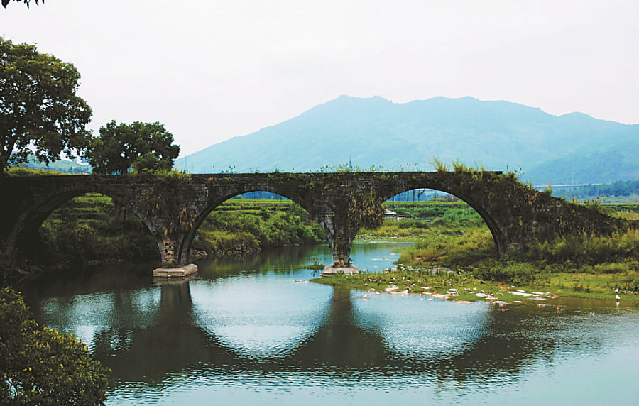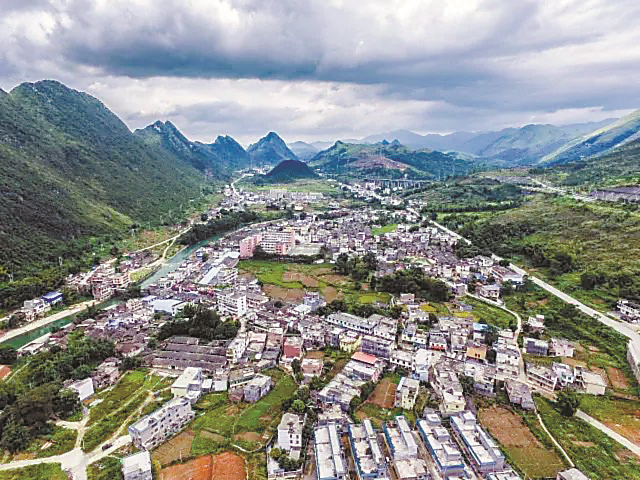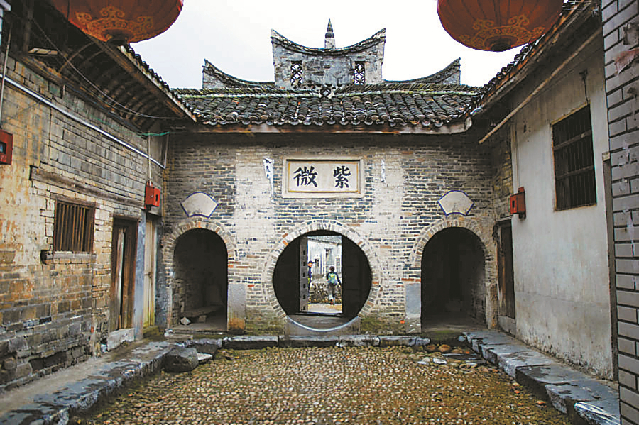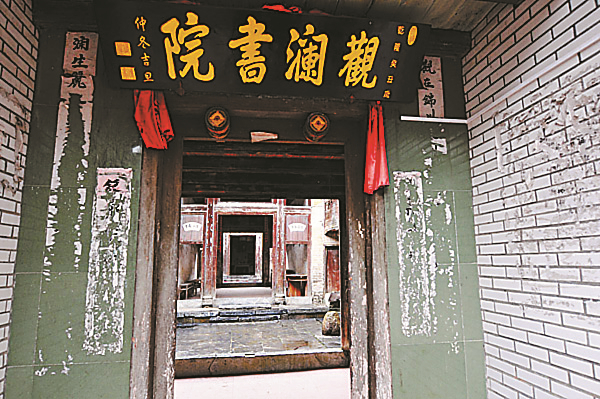A nostalgic tour along Xijing Ancient Postal Road
Writer: Chen Xiaochun | Editor: Nan Nan | From: | Updated: 2017-10-18
Fall is here and with it lingers a hint of memory-evoking nostalgia. Observing the beautiful and magnificent splendor that nature has to offer during this transitional season might make us feel more tranquil and comfortable while looking back on old memories, which are easily roused by the bittersweet atmosphere of autumn.
Rich in historical customs and poetic flavor, the ancient postal roads have something more to offer than just exquisite natural scenery. They have many stories to tell.
A postal road is a road designated for the transportation of postal mails. In past centuries, only major towns had a post office and the roads used by post carriers or mail coaches to distribute mails were particularly important due to their significant societal role.
Ancient postal roads in Guangdong date back to the Qin (221-206 B.C.) and Han (206 B.C.-A.D.220) dynasties. They transported many immigrants and demoted officers, bringing the advanced ideas, technology and culture of Central China to the then-desolate and regressive southern regions.
Xijing Ancient Postal Road in Ruyuan Yao Autonomous County, Shaoguan, is the earliest such road through which the culture of central China entered the Lingnan region. It is also the earliest and longest ancient road that linked Lingnan with the then-capital city according to the historical text “Shiji” (“The Records of the Grand Historian”), the earliest known record of the road.

An ancient bridge in Ruyuan along Xijing Ancient Postal Road. File photos
Xijing Ancient Postal Road was the expressway that linked the ancient capital city with Lingnan. During the Eastern Han (25–220), Sui (581-618) and Tang (618-907) dynasties, the political, economic and cultural center was located in today’s Xi’an in Shaanxi Province. From Later Jin (936-947) of Five Dynasties to Northern Song (960-1127) dynasties, today’s Luoyang in Henan Province became the center of societal activities.
Xijing Ancient Postal Road boasts rich historical and cultural heritage including ancient pavilions, villages, bridges and post offices. Currently, the most intact sections of the ancient postal road inside Ruyuan are the Houziling section, Wuliqiao section, Tiyunling section and Laling section.

Ruyuan
The sections of Xijing Ancient Postal Road in Ruyuan are the most dangerous. The Houziling (Monkey Mountain Range) section is called so for its resemblance with the forehead of a monkey, with its steep and cragged profile. However, when spring comes, the scenery softens as patches of golden flowers bloom before visitors.
Walking down the Houziling section, one would come upon the Wuliqiao (Five Li Bridge) section. Here, green flagstone staircases, old houses, flowing water, a stone arch bridge, the Guanlan Academy, Hakka enclosed houses and Guanyin hidden in the picturesque landscape all seem to make time slow down and tell you their stories bit by bit.

An ancient Hakka house in Ruyuan.

Guanlan Academy in Daqiao Ancient Town.
The Tiyunling (Staircase to the Cloud Mountain Range) section on the north of Nanshui Lake is 2.72 kilometers in length. It was a strategically important section for connecting the north with the south. Many ancient literati traveled through this section to attend the imperial exams or to assume an official position in the capital. Demoted officers also traveled through this section to reach the south.
Recommended tour
Day 1: Hongdoushan Forest Park — Wuliqiao section of Xijing Ancient Post Road — Daqiao Ancient Town — Tongji Bridge — Guanlan Academy — Nanling National Park Forest
Day 2: Yunmen Temple — Residence of Zhu Dezu — Nanshuihu National Wetland Park — Guangdong Great Canyon